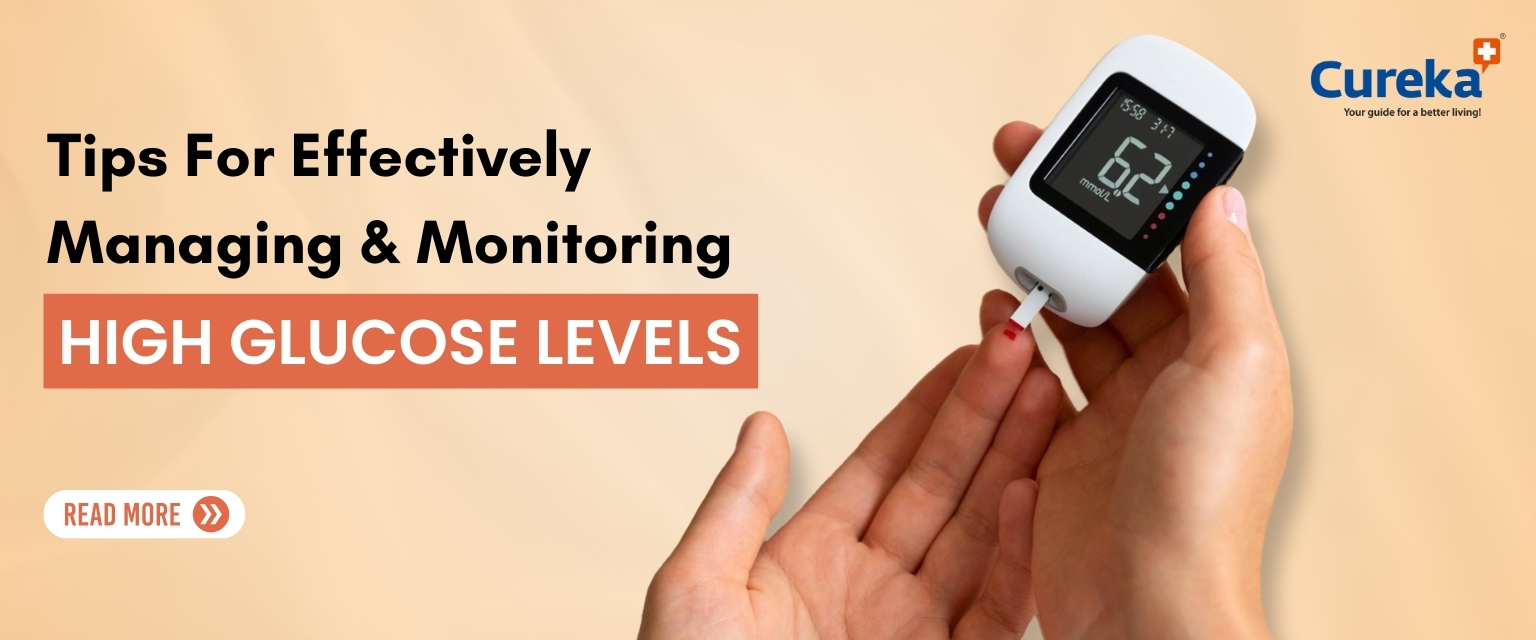Tips for Effectively Managing and Monitoring High Glucose Levels
Managing high blood glucose levels is critical for maintaining overall health, especially for individuals with diabetes. Regular monitoring of glucose levels at home is an essential tool in preventing complications and ensuring blood sugar stays within a healthy range. Whether you’re new to diabetes management or have been monitoring for a while, it’s important to understand how to use a glucose monitoring device effectively. This article will provide helpful tips for managing and monitoring high glucose levels, using the right glucometer, tracking patterns, and understanding your results.
1. Choose the Best Glucose Meter for Accurate Readings
Selecting the best glucose meter is the first step toward effective glucose monitoring at home. A glucometer is an essential tool for measuring blood sugar levels, and choosing a reliable device is crucial for getting accurate results. There are several types of blood sugar monitors on the market, with features like fast results, easy-to-use interfaces, and memory functions that store previous readings. Be sure to choose a glucometer kit that suits your needs, whether it’s a portable option or one with a larger screen for easier readability. Additionally, it’s important to understand the meter’s user manual and the correct usage of test strips to avoid errors.
2. Follow Proper Testing Procedures for Accurate Results
When using a blood glucose monitor, it’s essential to follow the correct testing procedures to ensure the accuracy of your readings. Proper use of the glucometer kit involves cleaning the test site, using the correct lancet depth for obtaining a blood sample, and following the manufacturer’s instructions. For the most accurate results, test at consistent times during the day, such as before meals and two hours after eating, to get a clear picture of how your body responds to food and activities. Monitoring frequently will also help you detect any high or low blood glucose levels early, preventing potential complications.
3. Track Your Blood Glucose Levels Regularly
Keeping a log of your blood glucose levels is essential in managing your condition. Recording your glucometer readings alongside notes about your meals, exercise, and medication can help you identify trends in your blood sugar levels. Regular tracking allows you to see how your glucose fluctuates throughout the day and understand what factors affect your levels the most. This information is valuable not only for your own awareness but also for your healthcare provider to make necessary adjustments to your treatment plan. Accurate and consistent tracking can also give you a better understanding of how your lifestyle choices impact your blood sugar.
4. Understand When and Why You Need to Test More Often
How often you should test depends on your type of diabetes, medications, and overall health. Self-monitoring of blood glucose (SMBG) is particularly important for individuals with type 1 and type 2 diabetes, as it helps identify any sudden changes in glucose levels. For example, if you’re on insulin or adjusting your medication, you may need to test more frequently. Studies have shown that SMBG helps improve overall blood glucose control and can lead to better long-term health outcomes. If your blood glucose levels are often too high or too low, increasing the frequency of testing can help you make the necessary adjustments before complications arise.
5. Use the Data to Make Lifestyle Adjustments
Monitoring your blood glucose regularly helps you gain insights into how your body responds to various foods, exercise, and medications. If you notice spikes in blood sugar after certain meals or activities, you can adjust your lifestyle accordingly. For instance, you might choose lower glycemic foods, increase your physical activity, or modify your medication under the guidance of your healthcare provider. The goal of glucometer usage is not just to check your blood sugar, but to use the information to make proactive changes that will help keep your glucose levels in a healthy range.
Conclusion
Effective management and monitoring of high glucose levels is vital for preventing the risks associated with diabetes. Using the best glucose meter and following proper monitoring techniques are key steps in taking control of your blood sugar. By testing your glucose regularly, tracking your readings, and using the data to adjust your lifestyle, you’ll be able to make informed decisions and maintain a healthier life. Whether you’re using a glucometer kit for routine checks or working with your healthcare provider to optimize your care, self-monitoring plays an integral role in achieving better glycemic control.
References
- Benefits and Limitations of Self-Monitoring of Blood Glucose – 2007 Jan – https://pmc.ncbi.nlm.nih.gov/articles/PMC2769614/
- Frequency of blood glucose monitoring in relation to glycemic control in patients with type 2 diabetes – Jun 2001 – https://pubmed.ncbi.nlm.nih.gov/11375356/
- Self-Monitoring of Blood Glucose: Practical Aspects – 2010 Mar – https://pmc.ncbi.nlm.nih.gov/articles/PMC2864180/











